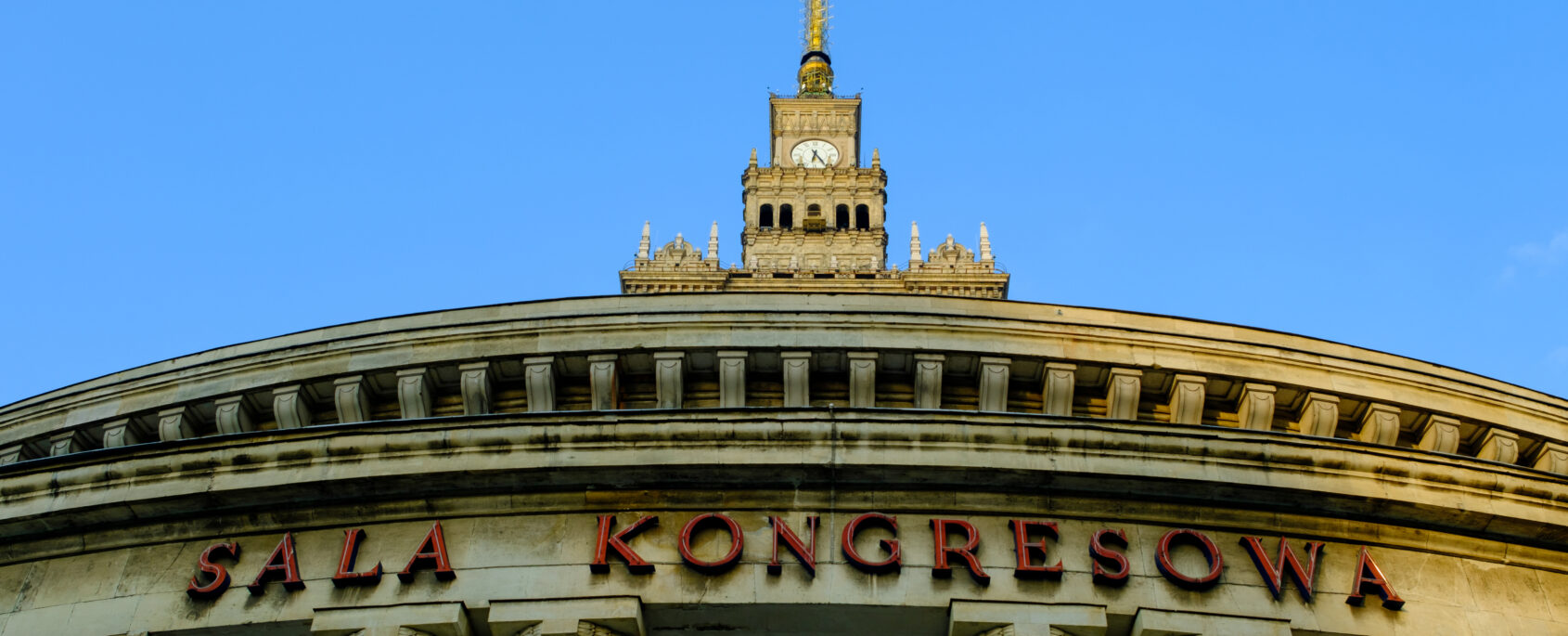The renovation of the Congress Hall in the Palace of Culture and Science in Warsaw is scheduled to be completed in a few years, but the hall itself has been closed since 2014. Why did we have to wait so long for the resumption of interrupted work? One of the reasons was the need to improve fire safety. The Everest5 team is responsible for the modernisation of all telecommunications systems in this facility. Today, we will focus on the VAS and several key guidelines regarding this system in public utility buildings.
The VAS (Voice Alarm System), which forms part of the fire alarm system, was created to ensure safety and communication in emergency situations. This system enables the transmission of warning signals and voice messages in the event of a fire hazard detected by the fire alarm system or directly by the system operator. Its main purpose is to inform people in the building about the existing danger and to direct them to the nearest emergency exits.
Its fundamental requirement is to achieve a Speech Transmission Index (STI) of at least 0.5 (on a scale from 0 to 1). The need to ensure such an index is described in the technical specification CEN/TS 54-32:2015 Fire detection and fire alarm systems – Part 32: Planning, design, installation, commissioning, use and maintenance of voice alarm systems.
To achieve the best possible speech intelligibility index, the reverberation time of the room (RT60) should be as low as possible, and speakers should be placed as close as possible to the listener – so that the listener receives the greatest amount of direct sound (not reflected). This can be achieved by covering as much of the room as possible with sound-absorbing materials. However, historical buildings are typically finished with materials that strongly reflect sound, such as stone floors, marble walls, mirrors, etc., and there are few places where absorbing materials can be used (such as suspended acoustic ceilings or acoustic panels). Historical rooms also often have a large volume, which naturally increases the reverberation time. Therefore, large volume, hard material finishes, and limited possibilities for installing acoustic materials mean that the room reverberation time (RT60) is high, which adversely affects speech intelligibility.
To calculate the expected reverberation time and the resulting speech intelligibility index, acoustic simulations are performed. These involve building a computer model of the room and finishing it with the materials that will be used in the actual room. The computer model also includes the speakers that will be installed in reality (with specified efficiency and frequency characteristics) and they are excited with a signal that corresponds to human speech. Based on this, the number and placement of acoustic materials to improve the room’s acoustics, as well as the number and specific types of speakers, are selected in order to achieve the required speech intelligibility index and the appropriate sound pressure level, which should be higher than the background noise in the room caused by the presence of people and any operation of fire smoke extraction or ventilation systems. This process is often iterative, checking step by step whether the given number of speakers or the amount and type of material meets the set requirements yet.
This process should be supervised by professional acousticians who not only have the skills to work with acoustic simulation software but also the knowledge to interpret and verify the obtained results. Every computer programme is by definition only a simplified model of reality with finite accuracy, which in the case of VAS systems attempts to replicate the complex behaviour of acoustic waves.
Contact us if you are interested in expanding your knowledge about designing VAS systems in historical buildings. Our experience already covers over 30 facilities modernised under the supervision of conservation officers.



